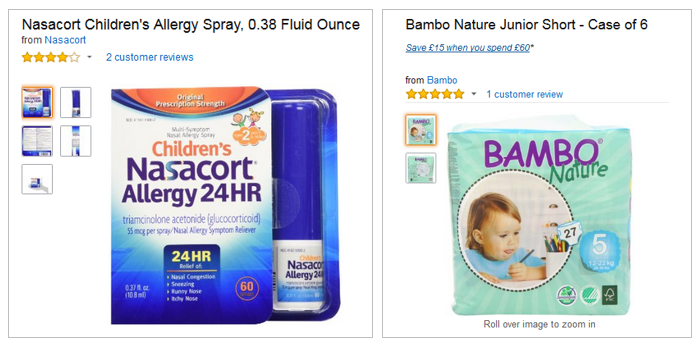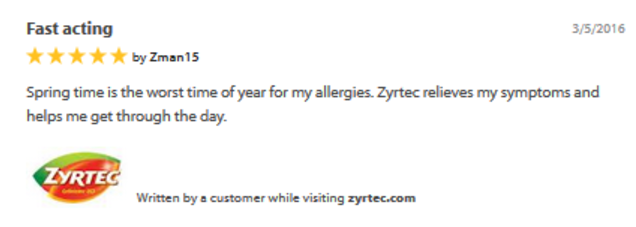Once you’ve analysed and organized your existing and incoming ratings and reviews, you’re ready to engage your loyal buyers to increase the quantity of product ratings and reviews.
Click here to sign up to join Unilever’s Digital and eCommerce Capabilities Manager, Jenna Spivak Evans, along with Clavis Insight’s Danny Silverman on March 30th for a case study on how the consumer goods leader is executing best practices to capture and leverage online store ratings and reviews.
Part 2: Engage Your Existing Buyers to Win New Buyers
It's great getting positive reviews for your products, but consumers are more likely to take the reviews and star rating seriously where there are good number of them. The conventional wisdom is that products need a minimum of 20 consumer ratings, at each online retailer, before they are considered credible in the eye of the consumer. When a parent in the US looks for allergy relief remedies for their child at Amazon.com, the four-star rating for Nasacort Children’s Allergy Spray may be taken with a grain of salt, since the item only has two reviews. A UK parent searching for nappies will have similar doubts about the five-star rating for Bambo Nature Junior Shorts at Amazon.co.uk that is based on only one review. Shoppers considering these items are left to wonder, did the brand marketing team write these reviews? Why don’t these items inspire loyalty and engagement among buyers?
Nasacourt and Bambo items at Amazon.com and Amazon.co.uk with insufficient product reviews
Achieving sufficient consumer engagement at each of your key online retailers takes time, so set reasonable goals for yourself and your team. For example, set a goal to have a minimum of 20 product reviews for your top selling products at your most important retailer within six months. Then track your progress and hold yourself and your team accountable to your goal(s).
Once you’ve set your goals, you're ready to launch campaigns to encourage buyer feedback on your products. There are a number of ways to do this:
- Ask! Your existing product buyers want to be wanted. Buyers who have ‘liked’ you on Facebook, visited your website or are on email lists enjoy your brand and product(s) and have engaged with you – they are your loyal buyers. You should let them know you value their feedback and ask them to review your products in online stores.
- Syndicate: Many online retailers, including Walmart.com and Target.com, will let brands syndicate product reviews, pulling product reviews from other retailer and brand sites onto retailer product pages. Two thirds of the reviews for a Zyrtec allergy product at Walmart.com are syndicated from either Zyrtec.com or a site managed by Zyrtec manufacturer, Johnson & Johnson, HealthyEssentials.com. Without the syndicated reviews, which include both positive and negative reviews, this item would only have ten product reviews at Walmart.com, too few for consumers to have confidence in the item's 4.7 average star rating.
Most recent review for a Zyrtec allergy item at Walmart.com is syndicated from Zyrtec's brand website.
- Launch retailer review programs: in addition to letting brands syndicate their product reviews, some online retailers have programs to help generate new ratings and reviews. Amazon invites trusted reviewers to become Vine members. Vine members receive new and pre-released items and review them on the items’ Amazon product pages. While brands pay to run Vine programs for their products, they can’t influence or modify the Vine member reviews, so these have become a credible way to increase an item’s reviews.
- Work with third party agencies: companies like BazaarVoice help brands increase their product ratings by sending product a panel of individuals who use and review the items, similar to Amazon’s Vine program, and then helping brands to syndicate those reviews across a number of retailers.
Once you’ve launched campaigns to engage your existing buyers to rate and review your items, your soon-to-be new buyers will have sufficient and credible peer-to-peer feedback on your product to make their purchase decision. Come back next week to learn how to listen and respond to those reviews to demonstrate your customer service and use product reviews as the rich resource that they are.
Click here to sign up to join Unilever’s Digital and eCommerce Capabilities Manager, Jenna Spivak Evans, along with Clavis Insight’s Danny Silverman on March 30th for a case study on how the consumer goods leader is executing best practices to capture and leverage online store ratings and reviews.






